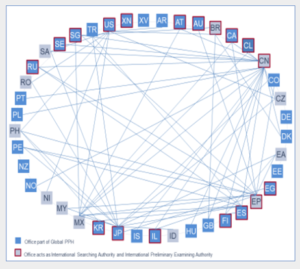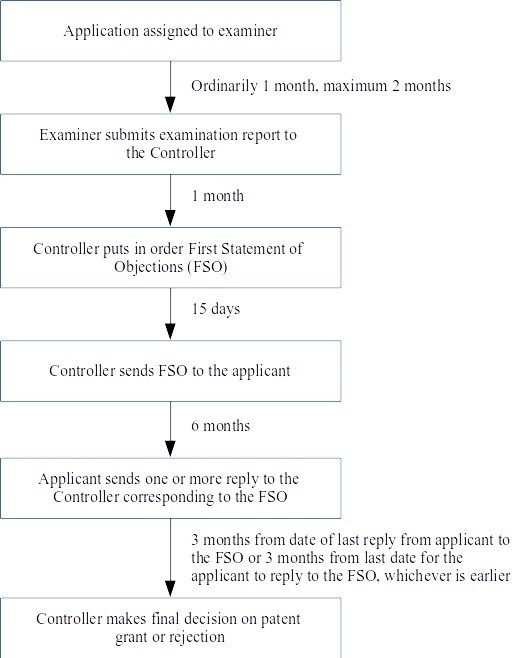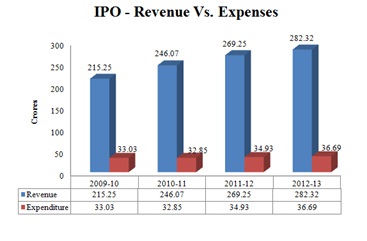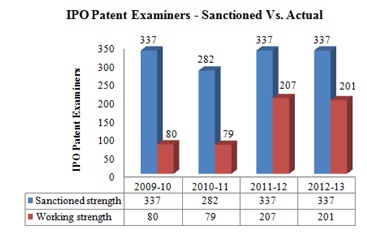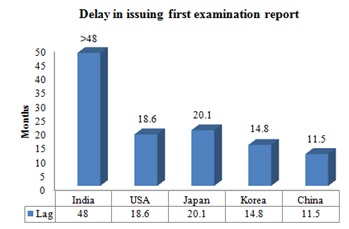Tag Archives: patent examination
What is PPH (Patent Prosecution Highway)? …. Why PPH? ….All that you need to know

Patent Offices across the globe have come up with various bilateral agreements to promote work-sharing and enable accelerated prosecution of patent applications at the office of second filing (OSF).
Pic: Global PPH status as of November 12, 2020(Courtesy: WIPO)
Patent Prosecution Highway (PPH) is one such bilateral agreement signed between the participating countries to reduce the search/examination burden and enhance the quality of examination in major patent offices in the world. PPH was first developed between the USPTO and JPO and the corresponding Pilot program commenced on July 03, 2006. The PPH enables reduction in patent application redundancy in partner patent offices, accelerates the process to provide expedited patent prosecution with better allowance rate and significant cost reduction mechanism.
PPH can be opted for applications that satisfy the following criteria:
- The patent application should not have been filed that recently that the prosecution in the Office of First Filing (OFF) has not reached a successful conclusion; and
- The patent application should not have been filed that long ago that the examination as already begun at the OSF.
Hence, Applicant wishing to avail the benefits of PPH must keep abreast the prosecution status of the related patent application in OFF and the OSF countries such that once the OFF issues allowance, the Applicant can request for PPH before the patent application is allotted for examination in the desired OSF.
|
Sl No. |
PROs |
CONs |
|
1. |
Time taken for examination shall be lesser. |
The claims cleared by OFF are set as the limitation for the claims applied in OSF |
|
2. |
Advantageous for cross-licensing negotiations |
Negative comments by the examiner in an OSF may be used during litigation against patent granted in OFF. |
|
3. |
Reduces overall costs |
Compromises the OSF examination quality by reducing the number of prior arts that could have been examined. |
Some Effective Strategies to make the most of PPH may include:
- Identify eligible pairs of OFF and OSF
- Identify the potential future OFF and OSF patent applications before the program starts.
- Identify patent applications for PPH that are divisional applications in the OFF. If the OFF of the divisional patent application is USPTO then the first set of claims can be applied via PPH route in the OSF and the other set of claims can be filed as a continuation patent application for conventional prosecution at a later stage. This enables preservation of broader claims.
The Patent Prosecution Highway (PPH) pilot program between Indian Patent Office (IPO) and Japan Patent Office (JPO) begins on December 07, 2020. The IPO has issued the guidelines for submitting the request for entering the IPO under the PPH program that is elaborated HERE.
The Applicant may note the following points while considering the PPH to enter the IPO from JPO:
- Number of requests for the PPH in IPO is limited to 100 per year (based on first come first basis).
- An Applicant may file not more than 10 PPH requests per year,
- Request for assigning special status for expedited examination must be filed online using FORM 5-1 under the chapter 5 of PPH guidelines,
- In case defects are notified by the IPO in Form 5-1, the Applicant will be given 30 days as time period to rectify the same.
- Applicant may request for expedited examination on Form 18A only after the IPO has accepted the request for assigning special status for expedited examination filed on form 5-1 as prescribed in chapter 5 of PPH guidelines.
- Notwithstanding the above procedure, the timelines for filing a request for expedited examination will be as prescribed under the Patent Rules, 2003.
PPH enables both powering up the patent prosecution process as well as weakening the global patent system in different ways. However, one can monetize based on the advantages of using PPH by consulting a qualified Patent Counsel for reviewing their patent application and identify strategies for maximizing the potential benefits of PPH programs.
We hope this article was a useful read.
Please feel free check our services page to find out if we can cater to your requirements. You can also contact us to explore the option of working together.
Best regards – Team InvnTree
This work is licensed under a Creative Commons Attribution-Non Commercial 3.0 Unported License
India working towards disposing pending patent applications in the next two years

Minister for Commerce and Industry, under which the Department of Industrial Policy and Promotion (DIPP) functions, has been taking several initiatives for substantive improvement of IP environment in India. The recent initiatives include comprehensive National IPR policy, relocation of Copyright Office to DIPP, merger of the Copyright Board with the Intellectual Property Appellate Board (IPAB), establishment of Cell for IPR Promotion and Management (CIPAM) and launch of Start-up Intellectual Property Protection (SIPP) scheme, among others.
Adding to the above initiatives, the office of Controller General of Patents, Designs and Trade Marks (CGPDTM) is making efforts to clear the backlog of about 2.3 lakh pending patent applications. DIPP has hired substantial number of examiners and is likely to dispose these pending applications in next two years. The introduction of expedited examination and the recruitment of around 450 patent examiners to add to the pool of existing 130 examiners at the Intellectual Property Office (IPO) is witness to such efforts of the DIPP. This recruitment has increased the speedy disposal of pending patent applications. In the year 2016-17, about 9,847 patents were granted by the IPO, as against 6,326 in the previous year. IPO has improved its count in issuance of examination reports, which has increased to 6,000 patent applications a month from the earlier 1,500 applications.
Suresh Prabhu, Minister for Commerce and Industry, while addressing the Leadership Summit on Anti-Counterfeiting and Brand Protection at New Delhi last month, highlighted the efforts and initiatives of DIPP and IPO to dispose off the pending applications at the earliest. He announced that the Ministry is working to come up with an effective plan by which patent applications will be disposed in the least possible time. These initiatives are expected to bring down the pendency of patent applications and targeted at final disposal of patent applications from the present 5-7 years to less than 18 months.
We welcome the initiatives and efforts of the ministry in establishing a strong IP regime, and more importantly a time bound one, which is likely to boost innovation in the country.
We hope this article was a useful read.
Please feel free check our services page to find out if we can cater to your requirements. You can also contact us to explore the option of working together.
Best regards – Team InvnTree
This work is licensed under a Creative Commons Attribution-NonCommercial 3.0 Unported License
Indian Government prepped up to expedite examination of increasing patent and trademark applications
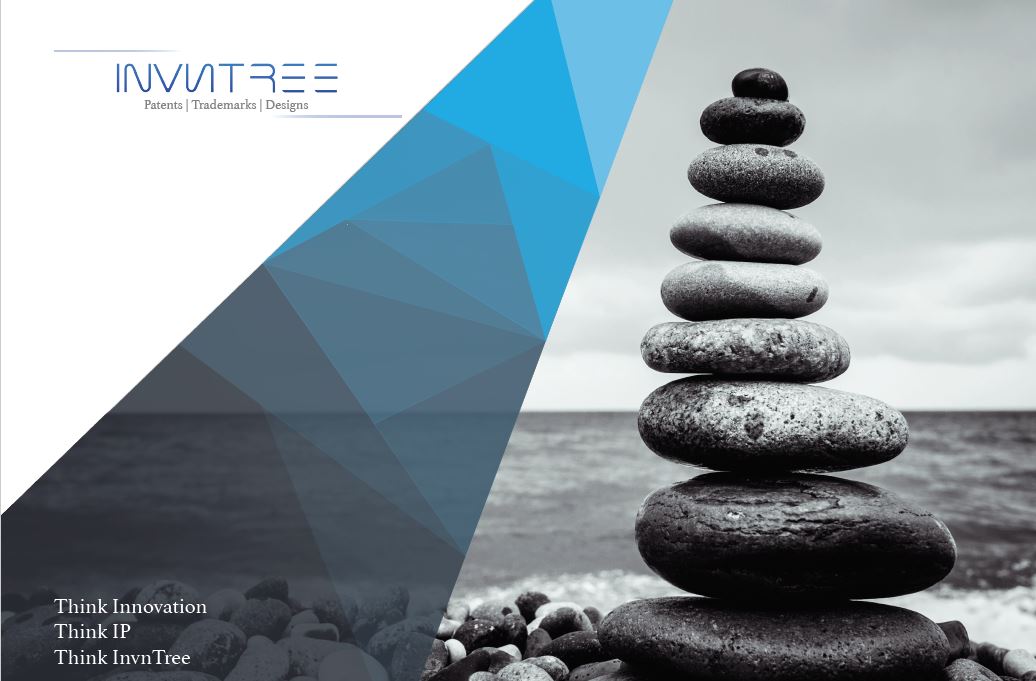
India is one of the fastest-growing major economy in the world. Further, India is fast emerging as a major market for research and technology driven products. Hence, over the years, the number of patent applications filed in India has soared. In the year 2015, India stood at 9th and 6th positions in the ranking of the number of patent applications filed in India by residents and non-residents, respectively. Similarly, the number of trademark applications filed in India has soared over the years. In the year 2015, India stood at 2nd and 9th positions in the ranking of the number of patent applications filed in India by residents and non-residents, respectively.
To handle and prosecute the increase in number of patent and trademark applications, the commerce and industry ministry has been augmenting manpower and is providing training to them. At the CII India-UK Tech Summit held in New Delhi, between November 7-9, 2016 the Joint Secretary in the Department of Industrial Policy and Promotion, Rajiv Aggarwal said that a year ago, the first examination of trademark applications was taking almost a year and half. In the month of November, 2016 the time for first examination of trademark applications has come down to around 4-5 months. By March 2017, it is expected that the first examination of trademark applications will come down to only one month. Similarly, for the first examination of patent applications it used to take approximately 6-7 years. It is aimed to bring down the first examination of patent applications to just 18 months by March 2018.
Conclusion:
It can be clearly seen that Indian patent office is striving to meet the expectations of stake holders when it comes to faster prosecution of the applications related to patent and trademark. Faster prosecution of the applications will lead to further increase the filing of patent and trademark applications, which is beneficial to the stakeholders and the patent office.
We hope this article was a useful read.
Please feel free check our services page to find out if we can cater to your requirements. You can also contact us to explore the option of working together.
Best regards – Team InvnTree
This work is licensed under a Creative Commons Attribution-NonCommercial 3.0 Unported License
Expedited Patent Examination in India
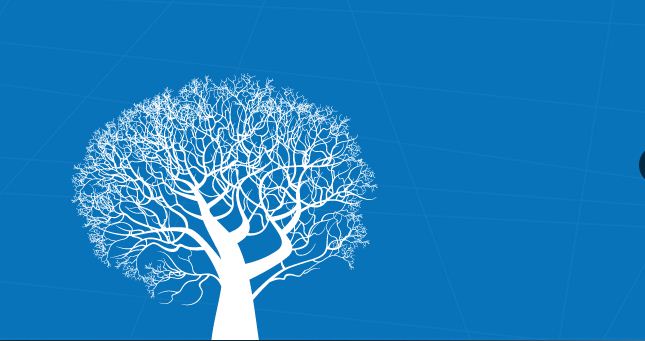
Introduction
A request for examination must be filed for the patent application filed with the Indian patent office. Unless this request is filed, the IPO will not take up the application for examination.
Ordinarily, a request for examination of a patent application filed in India shall be made within 48 months from the date of the earliest priority application.
The request for examination can be filed by the applicant or by any interested third party. After filing the request for examination, the Indian patent office will take up the application for examination in due course in the order in which the requests were filed. If no such request for examination is filed within the prescribed time limit, the application shall be treated as abandoned by the applicant.
Normally, it may take the IPO up to 3 years to complete the examination of an application and issue an examination report.
The IPO has introduction the option to expedite examination of patent applications. A request for expedited examination is an application filed by an applicant requesting the Indian Patent Office to accelerate the examination of the patent application under rule 24C of the Patent Rules, 2003. The applications for expedited examination will be allotted to a queue, which is different from the ordinary examination queue, and will be allotted to an examiner for examination substantially sooner than the applications that have been queued for normal examination.
Requirements for expedited examination
-
The applicant:
- Has chosen India as an International Searching Authority (ISA) or as an International Preliminary Examining Authority (IPEA) in a corresponding PCT application.
- Is a Start-up as defined in rule 2(fb) of the Patent Rules, 2003; or
- Is a small entity as defined in rule 2(fa) of the Patent Rules, 2003; or
- Is a female natural person; or
- Is a government undertaking in accordance with section 2(1) (h) of the Patent Act, 1970 in case of an Indian applicant, or is a similar entity in case of a foreign applicant; or
- Is eligible under an arrangement for processing an international application pursuant to an agreement between Indian patent office with another participating patent office.
- A request for expedited examination must be accompanied by a request for publication unless the application has already been published or the request for publication has already been filed.
- A request for expedited examination must be filed by Form 18A as specified in the second schedule of Patent Rules, 2003, along with the fee as mentioned in the first schedule.
Fees for expedited examination
The fees charged for expedited examination is more than the fees charged for ordinary examination. The fee structure for early publication, ordinary examination and expedited examination is provided below:
|
Request Type |
Government Fees |
|
|
Natural Person / Start-Up / Small Entity |
Others |
|
|
Early Publication |
INR 2,500 (USD 38) |
INR 12,500 (USD 192) |
|
Ordinary Examination |
INR 4,000 (USD 62) |
INR 20,000 (USD 308) |
|
Expedited Examination |
INR 8,000 (USD 123) |
INR 60,000 (USD 923) |
Converting ordinary examination request to expedited examination request
If an eligible Applicant has filed an ordinary request for examination and wishes to covert their request into an expedited examination request, by filing a Form 18A with the requisite fee as shown below:
|
Request Type |
Government Fees |
|
|
Natural Person / Start-Up / Small Entity |
Others |
|
|
Converting to an expedited examination request |
INR 4,000 (USD 62) |
INR 40,000 (USD 615) |
Conclusion:
The primary advantage of expedited examination is that, the applications for which expedited examination is requested will be allotted to a queue, which is different from the ordinary examination queue, and once the application queued for expedited examination is allotted to an examiner, the procedure to be followed is time bound, and the same is illustrated in the flow chart below.
Note that opportunity of hearing with the patent examiner is available, just like ordinary examination.
We hope this article helps patent applicants gain better understanding of the various initiatives of the Indian Patent office to expedite examination of patent applications and thereby benefit by availing them.
Please feel free check our patent services page to find out if we can cater to your patent requirements. You can also contact us to explore the option of working together.
Best regards – Team InvnTree
This work is licensed under a Creative Commons Attribution-NonCommercial 3.0 Unported License
The Indian Patent Office – A Cash Cow Left to Starve
India is fast emerging as a major market for research and technology driven products. One of the key indicators of this fact is the number of patent applications filed in India. As per a report from World Intellectual Property Organisation (WIPO), India stood at the 8th position leaving behind Canada in the year 2012, in quantum of patent application filings. With the steady increase in filing of patent applications, the revenue generated by the Controller General of Patents, Designs and Trademarks (CGPDTM), which is commonly known as Intellectual Property Office (IPO), has increased.
The IPO generated revenue of a little over 282.32 crores in 2012-13 compared to 269.25 crores generated in 2011-12. While the revenue has increased at a steady rate in the past few years, the IPO is all set to witness a sharp increase in revenue this financial year, thanks to massive increase in the statutory fee charged by the IPO for various patent filing, prosecution and maintenance activities.
Earlier the IPO had two slabs of statutory fee based on the category of patent applicants or patent owners. The IPO had two categories, i.e. “Natural Persons” (NP), such as individuals, and “Other than Natural Persons” (ONP), such as companies. The fee for the second category was 4 times of what was being charged for the first category. The IPO upon revision of its fee has made three categories, namely, NP, small entity (a legal entity who can be categorized as SME), ONP (a large entity – a legal entity who cannot be categorized as SME). The revised fee charged for small entity is 2.5 times of what is be charged for NP, and the fee for ONP is 5 times of what is charged for NP.
One would realise that the manner in which the fee has been revised by the IPO has been rather smart if one were to look at data closely. The increased fee for NP is negligible considering the minuscule factor of the IPO fee in the entire patenting process. SMEs who were earlier complaining about being charged the same fee as was being charged for large enterprise have been granted relief by offering to charge 2.5 times of NP, as compared to 4 times of NP, as was being done earlier. Large enterprise however will feel the pinch of the increased fee, but they might have hardly any reason to complain considering remarkably high government fee charged by most countries, to which most of them are already exposed.
The IPO has done remarkably well by pleasing the general masses of individuals and SMEs with its pricing structure, while cleverly making a killing, as the IPO generates majority of its revenue from companies who are categorized as large entities, who will now see a 100% increase in fee in most cases.
The IPO while being a cash cow generating impressive revenue, which is now set to increase significantly, spends a small percentage on its operations. In the year 2012-13, the IPO generated 282.32 crores and spent only 36.69 crores on its operations. The story has remained the same over the years.
Even though the IPO generates revenue surplus year after year, it has failed to meet its sanctioned working strength over the years, which has snow balled into an operational crisis. For example, the sanctioned strength of patent examiners stands at 337, while the working strength is 201, falling short by 40%! Shortage of employees can be witnessed across various departments and posts at the IPO.
One of the key indicators of the operational crisis at the IPO is the lag between patent application filing and issuance of patent application examination report by the IPO. At present, the lag is well over 48 months. In other words, a patent applicant has to wait for over 4 years after filing a patent application to receive an opinion on patentability from the IPO. A comparison of such lag in other countries indicates the dismal performance of the IPO.
This operational crisis may not be addressed even if the IPO were to meet its sanctioned working strength. The sanctioned strength is far too less to examine well over one lakh patent applications that have piled up over the years. Even if one were to ignore the pending patent application, the sanctioned strength is not even sufficient to examine patent applications that are currently being received. The IPO received 36247 examination requests in 2012-13, and in order to examine these within one year, each examiner (as per sanctioned strength) on an average will have to examine 107 patent applications in a year, which is not a feasible proposition reinforced by the fact that the IPO with 201 patent examiner clocked an average of examining 61 patent applications per year per examiner.
The IPO has done well in restructuring its fee structure, and patent applicants hope to see similar move by the IPO in restructuring its operations. Restructuring operations may include increasing its workforce and subscribing to initiatives such as Patent Prosecution Highway (PPH), which is a work sharing initiative between major patent offices across the world. Such operational restructuring which is required to make the Indian market more attractive to investors will of course require extensive support from the newly formed central government which has come to power on the “development” plank.
Data for graph
IPO – Revenue Vs. Expenses
|
Year |
Revenue (crores) |
Expenditure (crores) |
|
2009-10 |
215.25 |
33.03 |
|
2010-11 |
246.07 |
32.85 |
|
2011-12 |
269.25 |
34.93 |
|
2012-13 |
282.32 |
36.69 |
IPO Patent Examiners – Sancioned Vs. Actual
|
Year |
Sanctioned strength |
Working strength |
|
2009-10 |
337 |
80 |
|
2010-11 |
282 |
79 |
|
2011-12 |
337 |
207 |
|
2012-13 |
337 |
201 |
Delay in issuing examination report
|
Country |
Lag (months) |
|
India |
48 |
|
USA |
18.6 |
|
Japan |
20.1 |
|
Korea |
14.8 |
|
China |
11.5 |
Sources used for research:
http://ipindia.gov.in/main_text1.htm
http://ipindiaservices.gov.in/ferstatus/
http://www.uspto.gov/dashboards/patents/main.dashxml
http://www.fiveipoffices.org/stats/statisticalreports/2012edition/IP5statistics2012.pdf
I hope you found this article interesting. You may also read our related articles:
- How Long Does it Take to Get a Patent?
- How soon after filing a patent application in India, will it be examined?
Please feel free check our patent services page to find out if we can cater to your patent requirements. You can also contact us to explore the option of working together.
Best regards – Team InvnTree
This work is licensed under a Creative Commons Attribution-NonCommercial 3.0 Unported License

 Follow
Follow